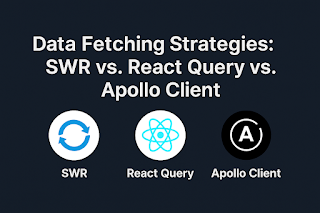Zero Downtime Deployment Strategies for Front-End & APIs
In today’s fast-paced digital world, downtime is no longer an option. Whether you're deploying a static React app or a microservices-based API, users expect continuous access without hiccups. But how do you release new features or fixes without interrupting service?
Let’s explore key strategies that enable zero downtime deployments—especially for front-end applications and backend APIs.
Why Zero Downtime Matters
User trust: Even a few seconds of downtime can disrupt user experience.
SEO implications: Downtime can negatively impact crawlability and indexing.
Revenue: For SaaS and eCommerce, downtime equals lost sales.
Strategies for Front-End Zero Downtime
1. Atomic Deployments (Immutable Builds)
Deploy new versions into a new directory or bucket (e.g., /builds/12345) and switch traffic only after the deployment completes.
Used with:
Netlify, Vercel, Cloudflare Pages
S3 + CloudFront with versioned objects
2. Blue-Green Deployments
Two environments: Blue (current) and Green (new). Traffic switches to Green after the successful deployment and health check.
Pros:
Fast rollback
Parallel testing of new release
3. Canary Releases
Release the new front-end version to a small % of users and monitor for issues before full rollout.
Popular with:
Feature flags tools like LaunchDarkly or Flagsmith
4. Client-Side Routing & Lazy Loading
Break app into micro frontends or use lazy-loaded chunks. Only deploy updated chunks, not the entire app.
Zero Downtime for Backend / APIs
1. Rolling Deployments
Gradually replace instances of the current version with the new one while keeping the app live.
Tools: Kubernetes, AWS ECS, GCP Cloud Run
2. API Versioning
Avoid breaking consumers by deploying new versions side-by-side (/v1, /v2).
Combine with rolling deployments for backward compatibility.
3. Database Migrations: Safe Patterns
Use expand and contract model:
Avoid direct column renames or destructive changes in live schemas.
4. Health Checks & Traffic Shifting
Ensure new services pass readiness checks before routing traffic. Use service mesh or load balancers to control traffic flow.
Summary: Key Tools
Final Thoughts
Zero downtime isn’t just a luxury—it’s a necessity in scalable applications. Start with small improvements like canary deployments and versioned APIs, then build towards fully automated CI/CD pipelines.
Downtime-free deployments = Better UX + More Trust + Peace of Mind.
#ZeroDowntime #FrontendDev #DevOps #APIArchitecture #WebPerformance #CICD #BlueGreenDeployment #RollingUpdates #DevExperience #Microservices #CloudEngineering #SoftwareEngineering





Comments
Post a Comment